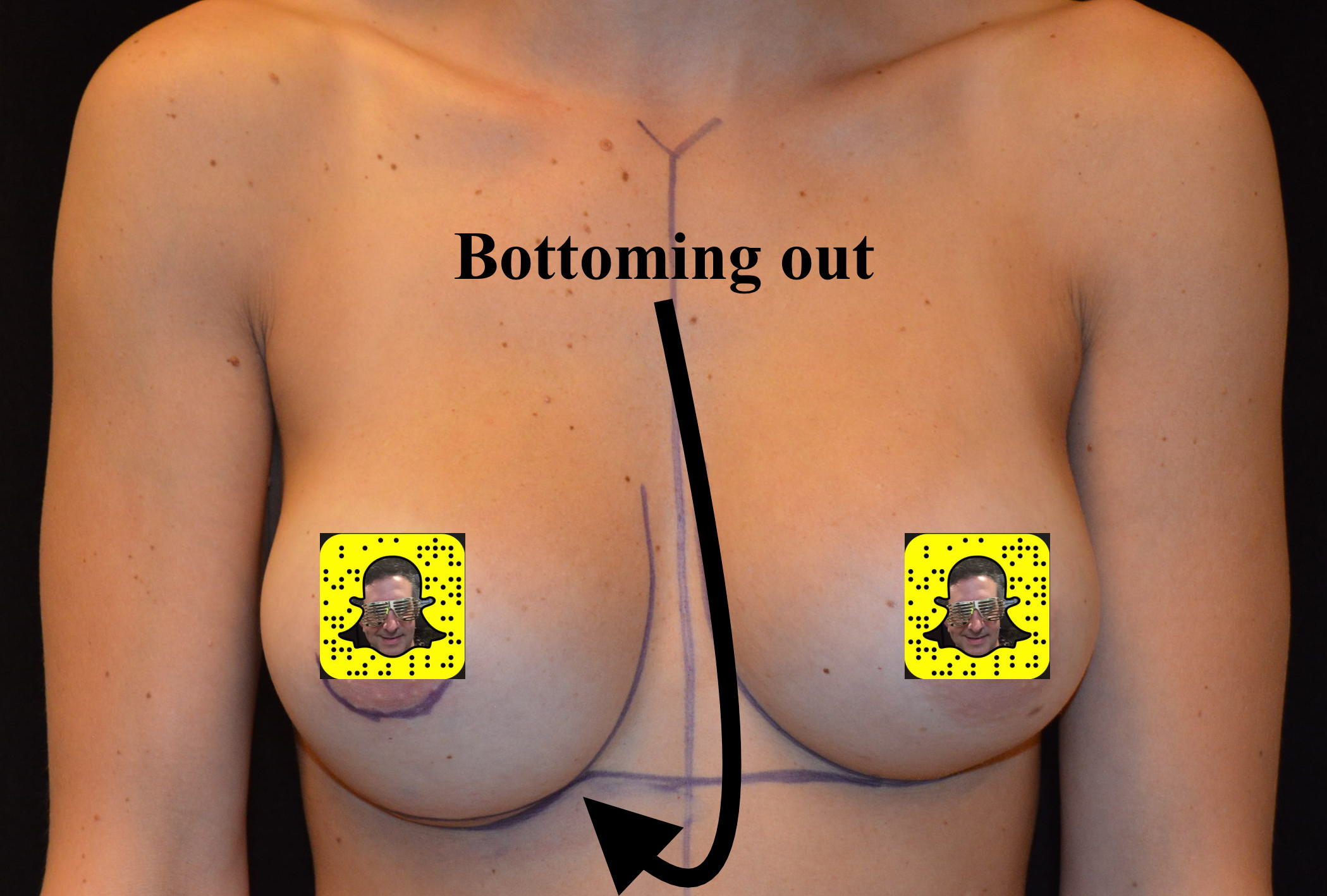 Breast augmentation is one of the most popular cosmetic procedures out there. And since cosmetic surgery is real surgery, some complications are inevitable. One such complication is bottoming out of the implant as shown above.
Breast augmentation is one of the most popular cosmetic procedures out there. And since cosmetic surgery is real surgery, some complications are inevitable. One such complication is bottoming out of the implant as shown above.
What is ‘bottoming out’ in breast augmentation?
In an ideal situation, a breast implant sits behind the breasts in perfect symmetry. However, if the fold under the breast, the inframammary fold, is disturbed, the implant can bottom out. The fold is usually very adherent to the chest wall.
Bottoming out can occur if the fold is inadvertently released from the chest wall. This can occur if the implants are too large and put too much pressure on the fold, such that it pulls away from the chest wall. And sometimes the fold must be lowered to accommodate a larger implant. If that’s done, the fold will bottom out if the fold is not affixed back to the chest wall with a suture.
If bottoming out occurs, a new pocket for the implant must be created. However, two things are important when doing this. First, the implant should remain under the muscle so the implant continues to be camouflaged and look as natural as possible. Secondly, the pocket needs to be strong to minimize a recurrence of bottoming out.
That’s where the neosubpectoral pocket technique comes in. This is a confusing concept so the video below will help. But essentially, the physician uses the naturally occurring scar tissue around the implant (the capsule), to help make the new pocket. A new pocket is made between the muscle and the capsule and the implant is placed here. That way, the implant is still under the muscle and on top of the capsule.
The alternative, is to use sutures to tighten the pocket and eliminate the bottoming out. However, a new pocket made with this technique has a high chance of failing because the sutures can pull through.
Video: How to treat bottoming out of the breast
To check pricing on a breast augmentation revision, click here.




